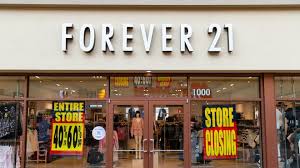A fast fashion merchant founded in 1984, which originally made itself successful by offering affordable, trendy clothing to young consumers, but has in recent years faced decline, including bankruptcy and store closures, due to increased competition and shifting consumer preferences. Charlie Linsdale says that, “I wish we could’ve appreciated this store before it went away. maybe if we knew then more people would help support Forever 21 and make some money.” I couldn’t agree less with her.
Forever 21 has been a famous fashion store in many malls around the U.S. for generations. It’s sad to say that it may be going away forever because of fast fashion competitors such as SHEIN and TEMU, rising prices, economic challenges, and evolving consumer trends. Not only is Forever 21 suffering, but a lot of retail stores are going into bankruptcy because of the decrease in consumerism because of the rising prices from inflation. Many people would rather spend their money on China’s fast fashion websites than go to the mall. This has a greater effect than some people think, malls could go bankrupt.

Forever 21 stores are currently putting all their products up for sale so that they can clear inventory to shut down. The sales can be as high as 80% off and the stores are even selling the racks and shelves. Even the Forever 21 online website is currently having sales sitewide around the U.S.
The store’s bankruptcy was not something that happened recently. Back in 2019, Forever 21 filed for bankruptcy to strive and make the business better, but because of the covid 19 outbreak there were fewer people who even showed up at the mall to support the business.
Started by South Korean immigrants in Los Angeles in 1984, Forever 21 became an overnight sensation among young people looking for trendy apparel at reasonable prices. The firm was among the pioneers in the era of fast fashion in America, characterized by mass and rapid production of cheap clothing. Forever 21 employed 43,000 people at its peak, had over 800 stores globally, and generated over $4 billion annually in revenue.










Arnaaz Saranda • Mar 27, 2025 at 8:34 am
Forever 21 has become a relic of the past..